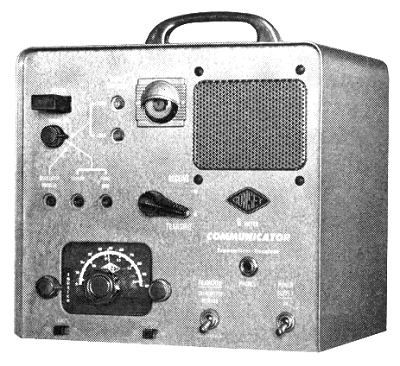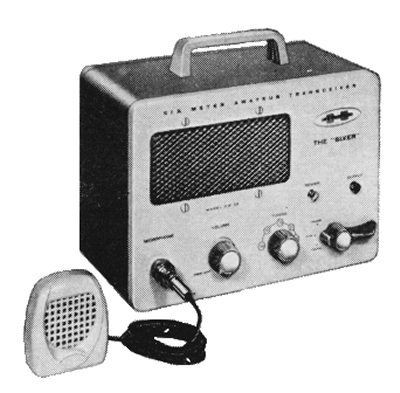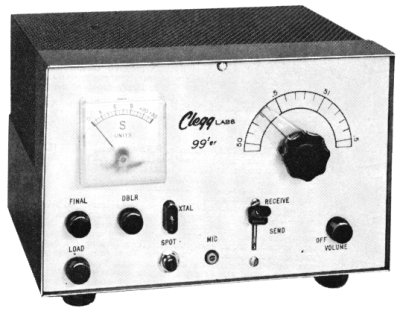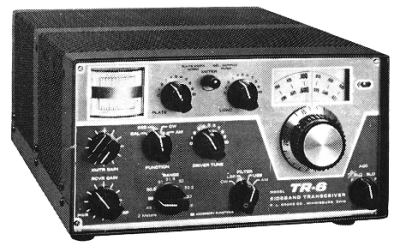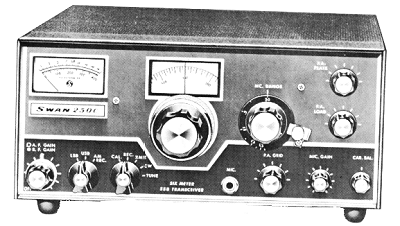

home > archive > the history of 6m > historical 6m rigs
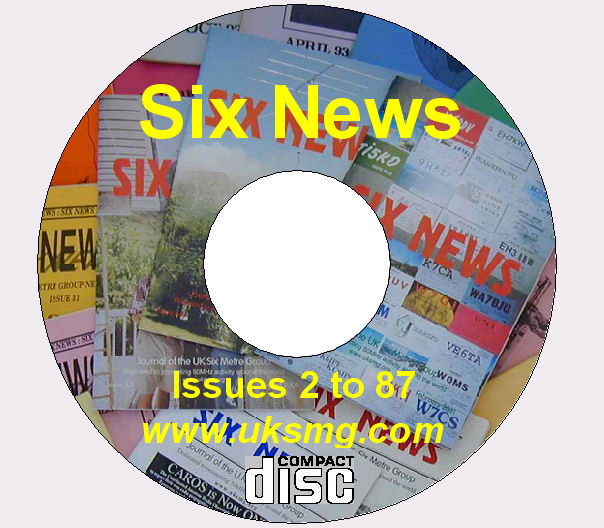
Thanks to all of our authors since 1982!
Six Metre Tranceivers - by Emil Pocock, W3EP |
||||||||||||||||||||||||||||||||||||||||||||||||||||||||||||||||||||||||||||||||||||||||||||||||||||||||||||||||||||||||||||||||||||||||||||||||||||||||||||||||||||||||||||||||||||||||||||||||||||||||||||||||||||||||||||||||||||||||||||||||||||||||||||||||||||||||||||||||||||||||||||||||||||||||||||||||||||||||||||||||||||||||||||||||||||||||||||||||||||||||||||||||||||||||||||||||||||||||||||||||||||||||||||||||||||||||||||||||||||||||||||||||||||||||||||||||||||||||||||||||||||||||||||
|
Six metre AM/CW Rigs (1955-1966) Six-metre transceivers are not new, of course. Prior to the late 1980s, the market for six metre equipment was largely limited to the countries of the Americas (especially the United States) and Japan, where the band had been available to radio amateurs since the late-1940s. Virtually all the mass-market transceivers prior to 1970 were US-made, beginning with the Gonset Communicator, introduced in 1955. This was a portable valve-type AM/CW rig with a five-watt crystal-controlled transmitter, packaged in an ungainly box with a handle on top. Nick-named the Gooney Box, the popular Communicators went through four model revisions through the 1960s. The model IV had significantly improved electronics and the case was slimmed down to give it a more modern appearance. US manufacturers produced at least a dozen other six metre only AM/CW valve-type transceivers prior to 1969, many of which are listed overleaf in Table 1. They ranged from the inexpensive and immensely popular Heath Sixer in kit form, which used a simple regenerative receiver and five watt crystal controlled transmitter, to the Clegg Thor VI and Gonset G-50, which offered a VFO, superheterodyne receiver, and 50 watts of transmitting power.
These early transceivers provided an easy way to get on the band for every budget. They were generally smaller and more convenient than the separate receivers and transmitters that were the mainstay of the HF bands at the time. Much of the six-metre activity in the US during the late 1950s and 1960s was fuelled by these pioneer transceivers. Although these rigs were a popular way to get on the band, they had a number of limitations, most notably poor receivers, crystal-controlled transmitters, and low power output. Many serious operators preferred to build state-of-the-art receive converters for their general coverage receivers and separate six metre transmitters. Nearly a dozen US manufacturers, including Collins, Johnson, Hallicrafter, Hammarlund, Parks, Tapetone, Clegg, RME, Ameco, Globe, and Lettine also offered ready-built converters and transverters for use with HF equipment.
Table 1: Some Early AM/CW six metre Transceivers. This table includes most of the popular six metre AM/CW transceivers available on the US market during the 1950 to 1970 period, but there may have been several others. Note: All valve-type, crystal controlled, unless VFO noted.
Valve-Type SSB/CW Rigs (1963-1970) A great leap forward took place during the early 1960s, when several US companies introduced modern VFO-controlled single-sideband rigs with as much as 100 W output. The Heath SB-110 (1965) was the first to include these features in a kit form. Also popular was the Swan 250 (1967) and its variants. Savvy VHF operators considered the Drake TR-6 (1970), especially with its optional noise blanker, the best six metre transceiver then available. The reign of the valve-type SSB rigs was short lived. By the mid-1970s, modern transistorised transceivers for six metres had made their appearance and quickly displaced the older rigs. Even so, many of these venerable valve-based transceivers are still on the air and can often be found for sale in American flea markets and rallies.
First Transistorised Rigs (1976-1980) US radio manufacturers were slow to make the transition to solid-state equipment. As a consequence, they were eclipsed by the innovations of the Japanese big three: Yaesu, Kenwood, and ICOM. The breakthrough came in 1976, when Yaesu introduced the FT-620B, the first mass produced all-transistor six metre transceiver. The two other Japanese radio companies soon followed with their own 10-Watt, six metre, solid-state rigs, including the TS-600 (1977) and the IC-551 (1979), the latter with a digital frequency readout. These were smaller, lighter, and more convenient than their valve cousins and worked directly from 12-volt DC sources, making then ideal for mobile and portable operation. The IC-502 (1977) was the first of a breed of completely self-contained, portable, SSB/CW rigs. With a strap to sling over one shoulder and the internal whip antenna extended, it was possible to make E-skip contacts 1000 miles away while strolling down the road. The IC-502 is still in big demand on the used market, perhaps because no other rig was so simple and lightweight. It was followed by more elaborate, higher power, and thus heavier portables, such as the FT-680R, FT-690R and IC-505.
Multi-band Transceivers (1981-1989) The Japanese six metre transceivers of the 1980s offered a variety of new features, including selected HF and VHF bands, expanded receiver coverage, memories, and scanning features. The TS-660 (1981), for example, spanned the 15, 12, and 10 metre bands in addition to six metres. The TS-680S (1988) was probably the first to have full coverage of all the HF bands plus six metres. The FT-726R (1983) went in the other direction by offering a choice of several higher VHF band options via plug-in modules. The IC-575A (1987) received outside the ham bands in the 30 to 50 MHz range, a boon to those who followed the MUF upward in frequency or used television signals in the 48- and 49-MHz range as early warning beacons. Modern Solid-State Rigs (1991-1999) Six manufacturers introduced more than a dozen new transceivers with six-metre capabilities during the 1990s, more than any previous decade. This no doubt reflected several trends. There was a rapid expansion of activity in Europe, where the band was still a novelty and demand for rigs was high. Operators wanted better performance from their six metre equipment, akin to the best HF-only transceivers. Most often faulted was the receiver selectivity and dynamic range. Greater transmitter power was also desirable, especially as many European countries began raising earlier power restrictions. The most recent rigs offer a dizzying array of features, which have become the expected standard in a modern transceiver. These include coverage of all the HF bands, six metres, plus two metres; 100 Watts of transmitter power; wide receiver range above and below the six metre band; a good selection of IF filters; adjustable pass-band filter; digital signal processing; and ample memories and flexible scanning facilities. Several of the newest rigs have all these conveniences and more, such as electronic keyers, antenna tuners, monitor scopes, and dual frequency monitoring. The new compact rigs, which include many of these features in an incredibly small package, have made the biggest stir. Indeed, some observers have already termed the boom in six metre activity the ‘706 phenomenon’, in recognition of the incredible popularity of the ICOM IC-706 (1995) and its successors. Other manufactures quickly brought out with their own compact, HF plus six metre rigs. They are the Alinco DX-70T (1995), the first US-built six metre transceiver since the 1970s, and the Yaesu FT-100 (1999), which also included two metres and 70 cm. Kenwood had introduced the compact six metre only TS-60S in 1994, but has yet to contribute to the coterie of compact HF plus VHF rigs.
Table 2: Six-Metre SSB/CW Transceivers
Reasonable efforts have been made to insure completeness
and accuracy, but there may be some small errors. Size: F (full sized for home use); C (compact
for home or mobile); P (portable, with internal batteries); FT (full-size
with vacuum tubes) What Next? The era of the single-band six metre transceiver has probably come to an end. Innovations in the next generation of six metre rigs will undoubtedly be subsumed by technological developments in communications equipment generally. Transceivers of the future will simply include six metres as part of a standard coverage that will extend from 1.8 MHz into the UHF range. They will no longer be stand-alone radios with dedicated electronics, but rather extensions of personal computers. A plug-in board will take care of the receive signal-to-digital conversions, but the computer will handle all of the low-level digital processing on both receive and transmit. Only the high-power transmit functions will be housed in a separate attached box. Upgrading may require nothing more than buying a new computer program. Automatic signal processing and filtering, visual tuning and band scanning, built-in digital modes, and other as yet unimagined features are likely to be fully integrated into the six metre rigs of the next century. UKSMG Six News issue 65, May 2000 |
the early history of 6m
six in fifty-seven
down memory lane
6m history
6m history, G6DH
50yrs of 50megs
pt1
50yrs of 50megs
pt2
50yrs of 50megs pt3
50yrs of 50megs pt4
